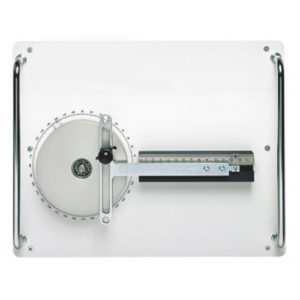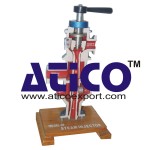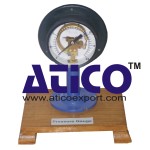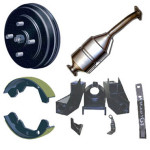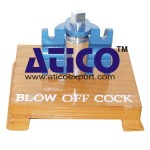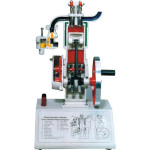The crank slider, unlike a normal crank mechanism, generates a purely harmonic stroke movement.
The unit can be used to generate and study purely harmonic stroke movements. The experimental unit comprises a rotating crank disk, connecting rod and fixed cylinder. The connecting rod is connected to the crank disk on one side via a crank. Changing the position of the crank on the crank disk adjusts the crank radius in three positions.
At the other end, the connecting rod is connected to the fixed cylinder. This end models the piston. The angle is adjusted using the crank disk, and an angle scale is integrated into the base plate. A millimetre-precise steel ruler is attached to the cylinder to measure the stroke.
The elements are mounted on a base plate. Two handles make it easy to carry and stack the unit.
Learning Objectives/Experiments:
Conversion of a uniform rotary motion into a purely harmonic reciprocating motion
Influence of crank length and input angle on the output stroke
Recording the transmission function of a crank slider
Specification
Investigation of a crank slider
Generation and investigation of purely harmonic stroke movements
Adjustment of the crank radius at three positions of the connecting rod on the crank disk
Adjustment of the angle by turning the crank disk
Measure the stroke on the cylinder
Technical Data
Crank disk
anodised aluminium
ball-bearing mounted
Crank radius
25mm
37,5mm
50mm
Connecting rod
anodised aluminium
Cylinder
stroke 0…100mm

